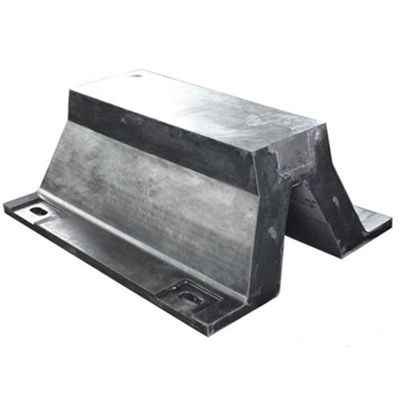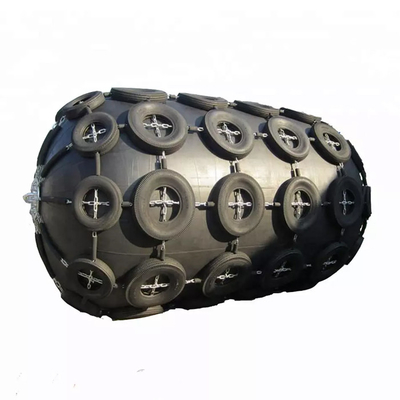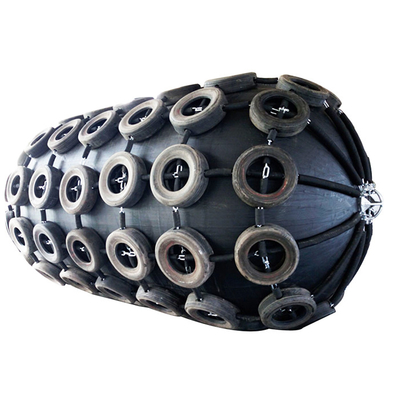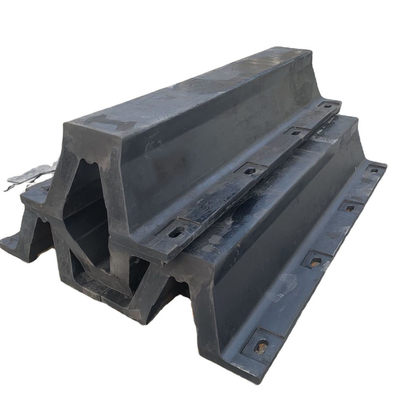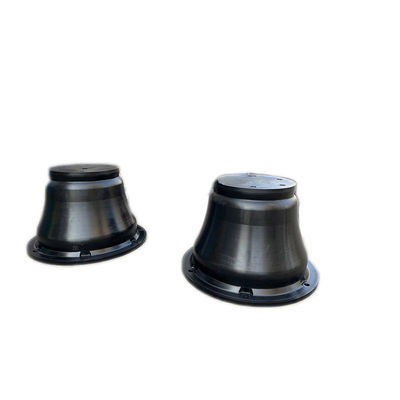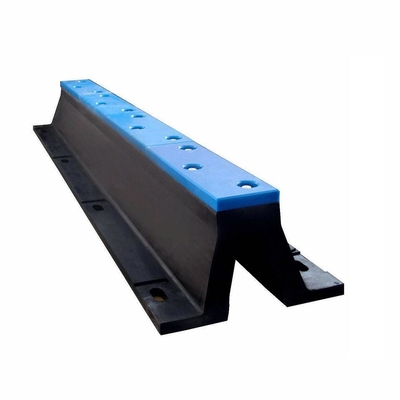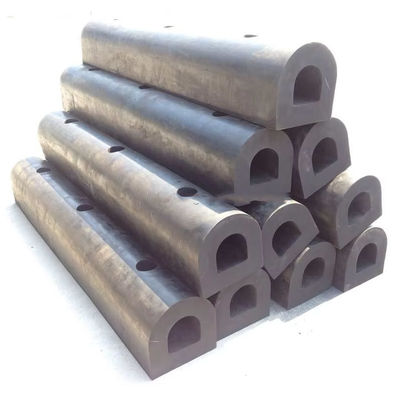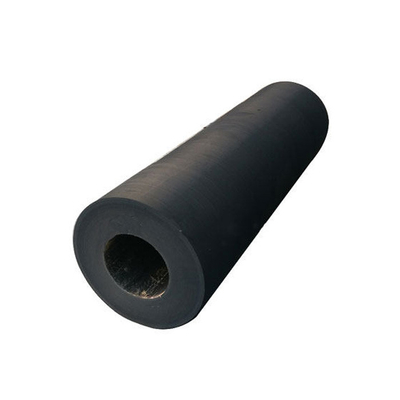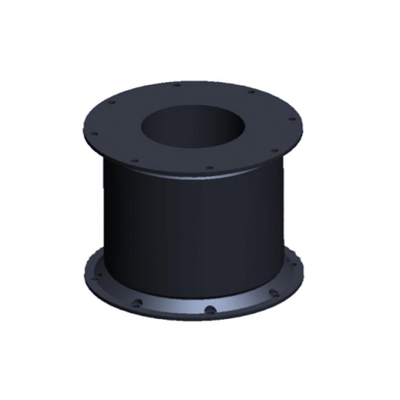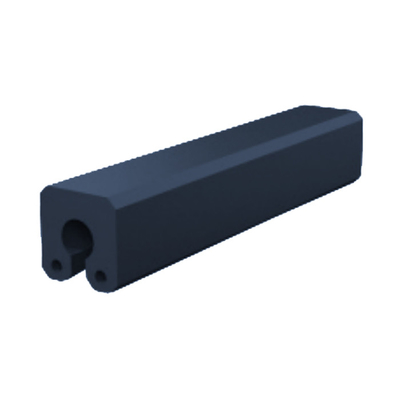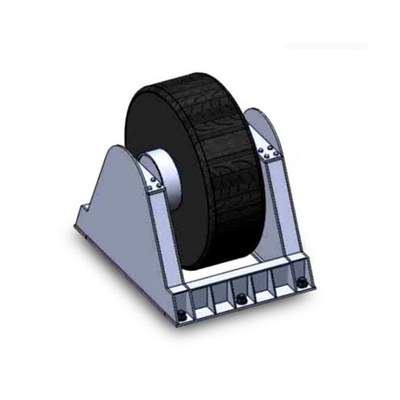Optimized Air Compression Energy Absorption
Each Yokohama fender uses internal compressed air as a highly efficient cushioning medium. When impacted, the fender compresses smoothly, distributing load evenly and minimizing reaction force on both ship and dock. This pneumatic flexibility allows for greater energy absorption compared to solid-type fenders, providing stable performance even in dynamic sea states.
Advanced Reinforced Layer Technology
The inner carcass consists of multiple tire-cord fabric layers arranged in bias angles for maximum tensile strength and fatigue resistance. These reinforcement layers prevent expansion and maintain the fender’s circular geometry under repeated compression. This design ensures consistent energy performance throughout its operational life, even after thousands of berthing cycles.
Seamless Outer Rubber Protection
The external rubber cover is formulated with ozone, UV, and seawater-resistant compounds. It prevents cracking, hardening, or delamination over years of exposure. The seamless design reduces stress concentration zones, while optional chain and tire nets enhance abrasion protection during heavy berthing of large vessels such as VLCCs and FPSOs.
Easy Handling and Maintenance Efficiency
Hongruntong pneumatic fenders are lightweight compared to solid rubber types, allowing quick deployment and relocation using minimal equipment. Inflation and deflation can be performed with standard air compressors, and long-term airtight performance reduces inspection intervals. Operators can easily monitor internal pressure using standard gauges for reliable maintenance control.
Applications
Large Vessel and Tanker Berthing
Ideal for LNG carriers, oil tankers, and bulk carriers requiring high-energy absorption during docking operations with concrete or steel quay walls.
Ship to Ship Cargo Transfers
Ensures safe distance and cushioning between two moving vessels during oil, gas, or chemical transfer operations in open water.
Offshore Structure Protection
Used around floating production platforms, drilling rigs, and modular docks to absorb impact from supply vessels or environmental motion.
Why Choose Hongruntong Marine
Global Manufacturing Standards and Certification
Hongruntong Marine’s Yokohama-type fenders are manufactured under ISO 17357 and ISO 9001 quality management systems. Each fender undergoes hydrostatic pressure, airtightness, and durability testing before shipment, ensuring compliance with international maritime safety standards.
Engineering Excellence and Material Innovation
Our in-house research team continuously optimizes rubber compounding, reinforcement weaving, and vulcanization processes. Proprietary rubber formulas enhance elasticity retention, temperature tolerance, and anti-aging performance, ensuring superior reliability in all climates.
Customized Design for Specific Marine Needs
Hongruntong provides fenders tailored to vessel dimensions, tidal ranges, and berthing speeds. Options include sling-type, chain-tire-net type, and customized end fittings for rapid installation. We perform finite element modeling (FEM) and impact energy simulation to guarantee design accuracy and operational safety.
Comprehensive Service and Global Logistics Network
With service centers in Asia, the Middle East, and Europe, Hongruntong offers on-site installation supervision, periodic inspection, refurbishment programs, and spare parts supply. Our support teams ensure minimum downtime and provide professional technical assistance throughout the fender’s operational life.
FAQ
1. How often should pneumatic fenders be inspected?
Every six months under standard use. Inspect for pressure levels, valve condition, and external rubber wear.
2. Can fenders be customized for offshore floating units?
Yes. We provide customized diameters, pressure ratings, and protective nets for floating production units and offshore terminals.
3. What inflation pressure is typically used?
Standard working pressures are 50 kPa and 80 kPa, depending on vessel type and berthing conditions.
4. Do Yokohama fenders require special storage conditions?
Store in a shaded, cool environment, avoiding direct sunlight and ozone exposure. Keep inflated to nominal pressure during long-term storage.
5. What warranty period does Hongruntong provide?
A standard two-year warranty covering material and manufacturing defects, with optional extended service agreements available.






 ข้อความของคุณจะต้องอยู่ระหว่าง 20-3,000 ตัวอักษร!
ข้อความของคุณจะต้องอยู่ระหว่าง 20-3,000 ตัวอักษร! กรุณาตรวจสอบอีเมลของคุณ!
กรุณาตรวจสอบอีเมลของคุณ!  ข้อความของคุณจะต้องอยู่ระหว่าง 20-3,000 ตัวอักษร!
ข้อความของคุณจะต้องอยู่ระหว่าง 20-3,000 ตัวอักษร! กรุณาตรวจสอบอีเมลของคุณ!
กรุณาตรวจสอบอีเมลของคุณ! 
